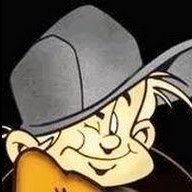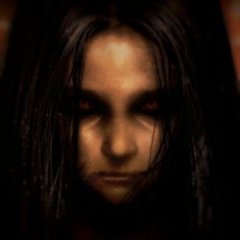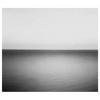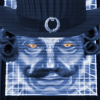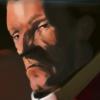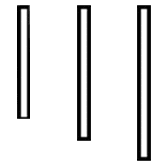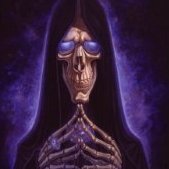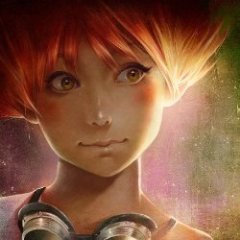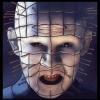Search the Community
Showing results for '/tags/forums/downloading problems/'.
-
Hello! I've been having a host of weird AA/ graphics problems with 2.06. Ill post them here and create bug reports when necessary (sorry if these are redundant in other threads) Windows 10. NVIDIA GeForce GTX 980. (Latest drivers) TDM 2.06 (Both 32 and 64 bit) Problem 1- AA forces fullscreen - While in windowed mode + (advanced render features off / SS/ Post/ect) - If I click AA on, it forces fullscreen mode even after restart. I have to disable AA and then restart to get back into window mode. Problem 2- AA and my skyboxes -While AA is turned on + (forced fullscreen, advanced render features off). My skyboxes get this weird windowed effect in them. If I turn bloom on, the effect is very noticeable and creates a huge FPS drop. Some screenshots: Cauldron: With Bloom: Volta and the Stone: with bloom: I did try removing the fog light I use in the skybox, but the problem persisted. Problem 3- Water shader - All advanced features off including AA. I get these very weird black lines on my water shader. Material file: volta_water_material.txt I want to make sure these are legit mod bugs before filing reports, so please let me know if you have the same problems or if these are already filed and being tracked. Thanks!
-
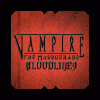
Add usability/accessibility settings to the main menu
wesp5 replied to Daft Mugi's topic in The Dark Mod
I'm all for giving the players more options, but you wrote that you edited most of these into the GUI already. So could you please fix the stupid GUI bug that has been annoying me for years too? It's the one when after downloading all available missions, the names of the very same missions are still visible in the download window overlayed with the text "No new missions to download" afterwards. -
Experimenting with TDM on Steam Link on Android. see topic http://forums.thedarkmod.com/topic/19432-tdm-on-steam-link-for-android/
-
I am trying to install the latest version of TDM, I think the last version I played was 2.09a. I am installing to a new folder My user created the folder and has full write access to it I am running the extracted .exe file in this new folder Problem 1: Why is the installer using the .exe filename as the URL for updating? This is absolute nonsense. I name my installers by the date or version number of the installer. This wasn't a problem in the past for TDM, or for any other thousands of installer I've used over the past 35 years. Never once have I seen an app look for a local file or external URL based on the name of the installer executable! According to https://wiki.thedarkmod.com/index.php?title=Tdm_installer_and_zipsync#tdm_installer about the installer "The config file is automatically downloaded from hardcoded URL. It describes all official versions of TDM and mirrors used to download them." Clearly this is not the case, it is literally using a URL based on the executable name! I should not be forced to keep a stupid name like tdm_installer.exe that doesn't even specify the version number (in this case v1.11). I have the previous installers in my downloads folder named/dated appropriately. The installer won't even work if you change the case of the executable to title case "TDM_Installer.exe"! It's ridiculous. Problem 2: Why is the install directory listed in red? My user created the folder and has full write permissions to it. The installer has no difficulties creating log files in the folder, so it obviously has write permissions. Problem 3: Why does the installer not provide any way to specify a new folder to install to? There is no "New Folder" button anywhere in the GUI. I'm not sure if typing in a folder name works or not, because it remains red either way, and won't let me continue the install with permission problems. But regular users should not be required to know this hack. Also, when you select a folder, the installer does not add "The_Dark_Mod" or whatever as a default folder name like most apps do. It is left entirely up to the user to create an install folder beforehand. Kind of defeats the purpose of an installer being quick and easy. Problem 2 - Follow Up: I am still unable to install TDM after renaming the .exe to the original lowercase name. It still complains that I don't have permissions to the folder, but obviously I do! tdm_installer.exe is creating log files in the folder while telling me that it doesn't have permissions to write to that very same folder! It's beyond absurd. Why is the installer lying? I have solved the issues by changing Security settings so ALL LOGGED IN USERS have full write permissions to the folder, but that is not desired -- why is that necessary? My user already had full permissions to the folder when creating it, and the installer had write permissions to the folder. Possible Solution For Problem 1: The installer should never use the name of the executable for anything to do with local filenames or external URLs. Update the installer so it does what the Wiki says it does -- uses a fixed URL to get the list of TDM versions. Possible Solution For Problem 2: The installer should be updated so it automatically changes permissions to the install folder as-needed. Requesting UAC privilege escalation if needed to alter the folder permissions. At the very least it should tell the user what permissions it needs for the folder (it already had full write permissions!). Heck, just make the installer ATTEMPT to create a file to see if it has permissions. Clearly it is checking permissions incorrectly and misinforming the user about it, then refusing to continue. Possible Solution For Problem 3: Have a way to create a new folder from the installer GUI, such as an "Add Folder" button or a right-click menu with "New Folder".
-
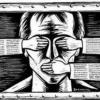
So, what are you working on right now?
JackFarmer replied to Springheel's topic in TDM Editors Guild
The problem with the FPS counter is that it is quite unreliable when it comes to determining how the game runs on other computer configurations. Therefore, you should always use the previously mentioned commands to check. It might also be a good idea to do some kind of alpha performance testing. @Zerg Rush machine is a kind of benchmark for me; if the game runs badly on his machine, then many others will have problems as well in my experience. How this is to be evaluated technically, I don't know exactly either, and I've heard several opinions on why certain things are very demanding. My experience is just: Keep light radii in larger scenes as small as possible and preferably not overlapping. Too many entities in large scenes have bad effects - use LOD where possible. Design portals in such a way that they close. In one of your screenshots you can see only closed portals on the right side and a large number of open portals on the left side, which raises the question what these portals are supposed to do and what would also explain the number of draw calls. Duzenko says that Draw Calls should always be around 2,500 - Springheel once said that they should not be above 4,500. However, I have noticed in beta tests that some people had problems with their computers when the draws were over 4,500. Shadow count should be (as Springs once mentioned) below 80,000. I also noticed that this has a big effect. This can be reduced significantly if you proceed as described in "1." above. But your shadow count is zero. Can this be correct or is this defective? @nbohr1more -
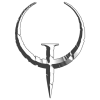
Why are there no more new fan missions in the missions section ?
AluminumHaste replied to ^^artin's topic in Fan Missions
Keep in mind also that mission size, and complexity have increased dramatically since the beginning. For a lot of veteran mappers, it can take over a year to get a map made and released. The last dozen missions have for the most part been pretty massive, with new textures, sounds, scripts, models etc. We seem to be long past the point of people loading up the tools, and banging out a mission in a few weeks that's very barebones. We still do see some of those, but I noticed in the beta mapper forums and on Discord, that mappers seem to make these maps, but don't release them, and instead use the knowledge gained to make something even better. Could just be bias on my part scrolling through the forums and discord server though. -
Thanks, I can also recommend gog galaxy. The idea of the custom tags is really nice, I'll have to try this out too!
-
Thief4 trainer with NOCLIP mode - http://forums.thedarkmod.com/topic/16001-thief-4-tweaks-fixes/page-7?do=findComment&comment=420152
-
Hi! I'm a Thief-fan since almost 20 years now (times flies!) and have finally decided to treat myself this seemingly excellent game that is the Dark Mod. I've installed TDM on my mac using PlayOnMac, following the procedure outlined in the thorough step-by-step-guide found here: http://wiki.thedarkmod.com/index.php?title=Installer_and_Manual_Installation#Installing_TDM_on_Linux.2FMac_OS.2C_using_PlayonMac.2FPlayonLinux Still, when I try to launch TDM I get an error message saying TheDarkMod crashed. Any ideas on how to move forward from here? (I have btw not forgotten to install "mvsc100"). Thanks in advance, I am really looking forward to exploring the game!
-
YOU TAFFERS! Happy new year! Deadeye is a small/tiny assassination mission recommended for TDM newcomers and veterans alike. Briefing: Download link: https://drive.google.com/file/d/1JWslTAC3Ai9kkl1VCvJb14ZlVxWMmkUj/view?usp=sharing Enjoy! EDIT: I promised to someone to write something about the design of the map. This is in spoiler tags below. Possibly useful to new mappers or players interested in developer commentary.
- 27 replies
-
- 17
-

-
Hello, everyone! In this multi-part, comprehensive tutorial I will introduce you to a new light type that has been available in The Dark Mod since version 2.06, what it does, why you would want to use it and how to implement it in your Fan Missions. This tutorial is aimed at the intermediate mapper. Explanations of how to use DarkRadiant, write material files, etc. are outside of its scope. I will, however, aim to be thorough and explain the relevant concepts comprehensively. Let us begin by delineating the sections of the tutorial: Part 1 will walk you through four, distinct ways to add ambient light to a scene, the last way using irradiance environment maps (or IEMs). Lighting a scene with an IEM is considered image-based lighting. Explaining this concept is not in the scope of this tutorial; rather, we will compare and contrast our currently available methods with this new one. If you already understand the benefits IBL confers, you may consider this introductory section superfluous. Part 2 will review the current state of cubemap lights in TDM, brief you on capturing an environment cubemap inside TDM and note limitations you may run into. Three cubemap filtering applications will be introduced and reviewed. Part 3 will go into further detail of the types of inputs and outputs required by each program and give a walkthrough of the simplest way to get an irradiance map working in-game. Part 4 will guide you through two additional, different workflows of how to convert your cubemap to an irradiance map and unstitch it back to the six separate image files that the engine needs. Part 5 will conclude the tutorial with some considerations as to the scalability of the methods hitherto explained and will enumerate some good practices in creating IEMs. Typical scenes will be considered. Essential links and resources will be posted here and a succinct list of the steps and tools needed for each workflow will be summarized, for quick reference. Without further ado, let us begin. Part 1 Imagine the scene. You’ve just made a great environment for your map, you’ve got your geometry exactly how you want it… but there’s a problem. Nobody can appreciate your efforts if they can’t see anything! [Fig. 1] This will be the test scene for the rest of our tutorial — I would tell you to “get acquainted with it” but it’s rather hard to, at the moment. The Dark Mod is a game where the interplay between light and shadow is of great importance. Placing lights is designing gameplay. In this example scene, a corridor with two windows, I have decided to place 3 lights for the player to stealth his way around. Two lights from the windows streak down across the floor and a third, placeholder light for a fixture later to be added, is shining behind me, at one end of the corridor. Strictly speaking, this is sufficient for gameplay in my case. It is plainly obvious, however, that the scene looks bad, incomplete. “Gameplay” lights aside, the rest of the environment is pitch black. This is undesirable for two reasons. It looks wrong. In real life, lights bounce off surfaces and diffuse in all directions. This diffused, omni-directional lighting is called ambient lighting and its emitment can be termed irradiance. You may contrast this with directional lighting radiating from a point, which is called point lighting and its emitment — radiance. One can argue that ambient lighting sells the realism of a scene. Be that as it may, suppose we disregard scary, real-life optics and set concerns of “realism” aside… It’s bad gameplay. Being in darkness is a positive for the player avatar, but looking at darkness is a negative for the player, themselves. They need to differentiate obstacles and objects in the environment to move their avatar. Our current light level makes the scene illegible. The eye strain involved in reading the environment in these light conditions may well give your player a headache, figurative and literal, and greatly distract them from enjoying your level. This tutorial assumes you use DarkRadiant or are at least aware of idtech4’s light types. From my earlier explanation, you can see the parallels between the real life point/ambient light dichotomy and the aptly named “point” and “ambient” light types that you can use in the editor. For further review, you can consult our wiki. Seeing as how there is a danger in confusing the terms here, I will hereafter refer to real life ambient light as “irradiant light”, to differentiate it from the TDM ambient lights, which are our engine’s practical implementation of the optical phenomenon. A similar distinction between “radiant light” and point lights will be made for the same reason. Back to our problem. Knowing, now, that most all your scenes should have irradiant light in addition to radiant light, let’s try (and fail, instructionally) to fix up our gloomy corridor. [Fig. 2] The easiest and ugliest solution: ambient lights. Atdm:ambient_world is a game entity that is basically an ambient light with no falloff, modifiable by the location system. One of the first things we all do when starting a new map is putting an ambient_world in it. In the above image, the darkness problem is solved by raising the ambient light level using ambient_world (or via an info_location entity). Practically every Dark Mod mission solves its darkness problem1 like this. Entirely relying on the global ambient light, however, is far from ideal and I argue that it solves neither of our two, aforementioned problems. Ambient_world provides irradiant light and you may further modulate its color and brightness per location. However, said color and brightness are constant across the entire scene. This is neither realistic, nor does it reduce eye strain. It only makes the scene marginally more legible. Let’s abandon this uniform lighting approach and try a different solution that’s more scene-specific. [Fig. 3] Non-uniform, but has unintended consequences. Our global ambient now down to a negligible level, the next logical approach would be hand-placed ambient lights with falloff, like ambient_biground. Two are placed here, supplementing our window point lights. Combining ambient and point lights may not be standard TDM practice, but multiple idtech4 tutorials extol the virtues of this method. I, myself, have used it in King of Diamonds. For instance, in the Parkins residence, the red room with the fireplace has ambient lights coupled to both the electric light and the fire flame. They color the shadows and enrich the scene, and they get toggled alongside their parent (point) lights, whenever they change state (extinguished/relit). This is markedly better than before, but to be honest anything is, and you may notice some unintended side-effects. The AI I’ve placed in the middle of the ambient light’s volume gets omnidirectionally illuminated far more than any of the walls, by virtue of how light projection in the engine works. Moving the ambient lights’ centers closer to the windows would alleviate this, but would introduce another issue — the wall would get lit on the other side as well. Ambient lights don’t cast shadows, meaning they go through walls. You could solve this by creating custom ambient light projection textures, but at this point we are three ad hocs in and this is getting needlessly complicated. I concede that this method has limited use cases but illuminating big spaces that AI can move through, like our corridor, isn’t one of them. Let’s move on. [Fig. 4] More directional, but looks off. I have personally been using this method in my WIP maps a lot. For development (vs. release), I even recommend it. A point light instead of an ambient light is used here. The texture is either “biground1” or “defaultpointlight” (the latter here). The light does not cast shadows, and its light origin is set at one side of the corridor, illuminating it at an angle. This solves the problem of omnidirectional illumination for props or AI in the middle of the light volume, you can now see that the AI is lit from the back rather than from all sides. In addition, the point light provides that which the ambient one cannot, namely specular and normal interaction, two very important features that help our players read the environment better. This is about as good as you can get but there are still some niggling problems. The scene still looks too monochromatic and dark. From experience, I can tell you that this method looks good in certain scenes, but this is clearly not one of them. Sure, we can use two, non-shadowcasting point lights instead of one, aligned to our windows like in the previous example, we can even artfully combine local and global ambient lights to furnish the scene further, but by this point we will have multiple light entities placed, which is unwieldy to work with and possibly detrimental to performance. Another problem is that a point light’s movable light origin helps combat ambient omnidirectionality, but its projection texture still illuminates things the strongest in the middle of its volume. I have made multiple experiments with editing the Z-projection falloff texture of these lights and the results have all left me unsatisfied. It just does not look right. A final, more intellectual criticism against this method is that this does not, in a technical sense, supply irradiant light. Nothing here is diffuse, this is just radiant light pretending the best it can. [Fig. 5] The irradiance map method provides the best looking solution to imbuing your scene with an ambient glow. This is the corridor lit with irradiance map lights, a new lighting method introduced in The Dark Mod 2.06. Note the subtle gradients on the left wall and the bounced, orange light on the right column. Note the agreeable light on the AI. Comparing the previous methods and this, it is plainly obvious that an irradiance environment map looks the most realistic and defines the environment far better than any of the other solutions. Why exactly does this image look better than the others? You can inform yourself on image-based lighting and the nature of diffuse irradiance, but images speak louder than words. As you can see, the fact of the matter is that the effect, subtle as it may be, substantially improves the realism of the scene, at least compared to the methods previously available to us. Procuring irradiance environment maps for use in lighting your level will hereafter be the chief subject of this tutorial. The next part will review environment cubemap capture in TDM, the makeIrradiance keyword and three external applications that you can use to convert a TDM cubemap into an irradiance map. 1 “ Note that the color buffer is cleared to black: Doom3 world is naturally pitch black since there is no "ambient" light: In order to be visible a surface/polygon must interact. with a light. This explains why Doom3 was so dark ! “ [source] Part 2 Cubemaps are not new to The Dark Mod. The skybox materials in some of our prefabs are cubemaps, some glass and polished tile materials use cubemaps to fake reflections for cheap. Cubemap lights, however, are comparatively new. The wiki page linked earlier describes these two, new light types that were added in TDM 2.05. cubicLight is a shadow-casting light with true spherical falloff. An example of such a light can be found in the core files, “lights/cubic/tdm_lampshade_cubic”. ambientCubicLight is the light type we will be focusing on. Prior to TDM 2.06, it acted as a movable, on-demand reflection dispenser, making surfaces in its radius reflect a pre-set cubemap, much like glass. After 2.06, the old behavior was discarded and ambientCubicLight was converted to accept industry standard irradiance environment maps. Irradiance environment maps (IEMs) are what we want to make, so perhaps the first thing to make clear is that they aren’t really “handmade”. An IEM is the output of a filtering process (convolution) which requires an input in the form of a regular environment cubemap. In other words, if we want to make an IEM, we need a regular cubemap, ideally one depicting our environment — in this case, the corridor. I say a snapshot of the environment is ideal for lighting it because this emulates how irradiant light in the real world works. All radiating surfaces are recorded in our cubemap, our ambient optic array as it were, then blurred, or convoluted, to approximate light scatter and diffusion, then the in-game light “shines” this approximation of irradiant light back to the surfaces. There is a bit of a “chicken and the egg” situation here, if your scene is dark to begin with, wouldn’t you just get a dark irradiance map and accomplish nothing? In the captured cubemap faces in Fig. 6, you may notice that the environment looks different than what I’ve shown so far. I used two ambient lights to brighten up the windows for a better final irradiance result. I’ve “primed the pump”, so to speak. You can ignore this conundrum for the moment, ways to set up your scenes for better results, or priming the pump correctly, will be discussed at the end of the tutorial. Capturing the Environment The wiki has a tutorial on capturing cubemaps by angua, but it is woefully out of date. Let me run you through the process for 2.07 really briefly. To start with, I fly to approx. the center of the corridor with noclip. I then type “envshot t 256” in the console. This outputs six .tga images in the <root>/env folder, simply named “t”, sized 256x256 px and constituting the six sides of a cube and depicting the entire environment. This is how they look in the folder: [Fig. 6] The six cube faces in the folder. Of note here is that I do not need to switch to a 640x480 resolution, neither do I need to rename these files, they can already be used in an ambientCubicLight. Setting Up the Lights For brevity’s sake, I’ll skip explaining material definitions, if you’ve ever added a custom texture to your map, you know how to do this. Suffice it to say, it is much the same with custom lights. In your <root>/materials/my_cool_cubemaps.mtr file, you should have something like this: lights/ambientcube/my_test_IEM_light { ambientCubicLight { forceHighQuality //cameraCubeMap makeIrradiance(env/t) cameraCubeMap env/t colored zeroClamp } } We’ll play with the commented out line in just a bit. Firstly, let’s place the actual light in DarkRadiant. It’s as simple as creating a new light or two and setting them up in much the same way you would a regular ambient light. I select the appropriate light texture from the list, “my_test_IEM_light” in the “ambientcube” subfolder and I leave the light colored pure white. [Fig. 7] The corridor in DR, top view, with the ambient cubic lights highlighted. I can place one that fills the volume or two that stagger the effect somewhat. Remember that these lights still have a spherical falloff. Preference and experimentation will prove what looks best to you. Please note that what the material we defined does is load a cubemap while we established that ambientCubicLights only work with irradiance maps. Let’s see if this causes any problems in-game. I save the map and run it in game to see the results. If I already have TDM running, I type “reloadDecls” in the console to reload my material files and “reloadImages” to reload the .tga images in the /env folder. [Fig. 8] Well this looks completely wrong, big surprise. Wouldn’t you know it, putting a cubemap in the place of an irradiance map doesn’t quite work. Everything in the scene, especially the AI, looks to be bathed in slick oil. Even if a material doesn’t have a specular map, it won’t matter, the ambientCubicLight will produce specular reflections like this. Let’s compare how our cubemap .tga files compares with the IEM .tgas we’ll have by the end of the tutorial: [Fig. 9] t_back.tga is the back face of the environment cubemap, tIEM_back.tga is the back face of the irradiance map derived from it. As you can see, the IEM image looks very different. If I were to use “env/tIEM” instead of “env/t” in the material definition above, I would get the proper result, as seen in the last screenshot of part 1. So it is that we need a properly filtered IEM for our lights to work correctly. Speaking of that mtr def though, let’s not invoke an irradiance map we haven’t learned to convert yet. Let’s try an automatic, in-engine way to convert cubemaps to IEMs, namely the makeIrradiance material keyword. makeIrradiance and Its Limitations Let’s uncomment the sixth line in that definition and comment out the seventh. cameraCubeMap makeIrradiance(env/t) //cameraCubeMap env/t Here is a picture of how a cubemap ran through the makeIrradiance keyword looks like: [Fig. 10] Say ‘Hi’ to our friend in the back, the normalmap test cylinder. It’s a custom texture I’ve made to demonstrate cubemap interactions in a clean way. Hey now, this looks pretty nice! The scene is a bit greener than before, but you may even argue it looks more pleasing to the eyes. Unfortunately, the devil is in the details. Let’s compare the makeIrradiance keyword’s output with the custom made irradiance map setup seen at the end of part 1. [Fig. 11, 12] A closer look at the brick texture reveals that the undesired specular highlighting is still present. The normal map test cylinder confirms that the reason for this is the noisy output of the makeIrradiance keyword. The in-engine conversion is algorithmic, more specifically, it doesn't allow us to directly compare .tga files like we did above. Were we able to, however, I'm sure the makeIrradiance IEM would look grainy and rough compared to the smooth gradient of the IEM you’ll have by the end of this tutorial. The makeIrradiance keyword is good for quick testing but it won’t allow you fine control over your irradiance map. If we want the light to look proper, we need a dedicated cubemap filtering software. A Review of Cubemap Filtering Software Here I’ll introduce three programs you can produce an irradiance map with. In the coming parts, I will present you with a guide for working with each one of them. I should also note that installing all of these is trivial, so I’ll skip that instructional step when describing their workflows. I will not relay you any ad copy, as you can already read it on these programs’ websites. I’ll just list the advantages and disadvantages that concern us. Lys https://www.knaldtech.com/lys/ Advantages: Good UI, rich image manipulation options, working radiance/specular map filtering with multiple convolution algorithms. Disadvantages: $50 price tag, limited import/export options, only available on Windows 64-bit systems. cmftStudio https://github.com/dariomanesku/cmftStudio Advantages: Available on Windows, OSX and Linux, free, open source software, command line interface available. Disadvantages: Somewhat confusing UI, limited import options, missing features (radiance/specular map filtering is broken, fullscreen doesn’t work), 32-bit binaries need to be built from source (I will provide a 32-bit Windows executable at the end of the tutorial). Modified CubeMapGen https://seblagarde.wordpress.com/2012/06/10/amd-cubemapgen-for-physically-based-rendering/ Advantages: Free software, quickest to work with (clarified later). Disadvantages: Bad UI, only Windows binaries available, subpar IEM export due to bad image adjustment options. Let’s take a break at this point and come back to these programs in part 3. A lot of caveats need to be expounded on as to which of these three is the “best” software for making an irradiance map for our purposes. Neither of these programs has a discreet workflow; rather, the workflow will include or exclude certain additional programs and steps depending on which app you choose to work with. It will dovetail and be similar in all cases. Part 3 The aim of this tutorial is twofold. First, it aims to provide the most hands-free and time-efficient method of converting an envshot, environment cubemap to an IEM and getting it working in-game. The second is using as few applications as possible and keeping them all free software that is available for download, much like TDM itself. The tutorial was originally going to only cover IEM production through Lys, as that was the app I used to test the whole process with. I soon realized that it would be inconsiderate of me to suggest you buy a fifty dollar product for a single step in a process that adds comparatively little to the value of a FM, if we’re being honest (if you asked me, the community would benefit far more from a level design tutorial than a technical one like this, but hey, maybe later, I’m filling a niche right now that nobody else has filled). This led me to seek out open-source alternatives to Lys, such as Cubemapgen, which I knew of and cmftStudio, which I did not. I will preempt my own explanations and tell you right away that, in my opinion, cmftStudio is the program you should use for IEM creation. This comes with one big caveat, however, which I’m about to get into. Six Faces on a Cross and The Photoshop Problem Let’s review. Taking an envshot in-game gives you six separate images that are game-ready. Meaning, you get six, split cubemap faces as an output, you need six, split irradiance map faces as an input. This is a problem, because neither Lys nor cmftStudio accept a sequence of images as such. They need to be stitched together in a cube cross, a single image of the unwrapped cube, like this: [Fig. 13] From Lys. Our cubemap has been stitched into a cross and the “Debug Cube Map Face Position” option has been checked, showing the orientations of each face. In Lys only panoramas, sphere maps and cube maps can be loaded into the program. The first two do not concern us, the third specifically refers to a single image file. Therefore, to import a TDM envshot into Lys you need to stitch your cubemap into a cross. Furthermore, Lys’ export also outputs a cubemap cross, therefore you also need to unstitch the cubemap into its faces afterwards if you want to use it in TDM. In cmftStudio you can import single map faces! Well… no, you can’t. The readme on GitHub boasts “Input and output types: cubemap, cube cross, latlong, face list, horizontal and vertical strip.” but this is false. The UI will not allow you to select multiple files on import, rendering the “face list” input type impossible.2 Therefore, to import a TDM envshot into cmftStudio you need to stitch your cubemap into a cross. Fortunately, the “face list” export type does work! Therefore, you don’t need to unstitch the cubemap manually, cmftStudio will export individual faces for you. In both of these cases, then, you need a cubemap cross. For this tutorial I will use Adobe Photoshop, a commercial piece of software, to stitch our faces into a cubemap in an automated fashion (using Photoshop’s Actions). This is the big caveat to using cmftStudio, even if you do not want to buy Lys, PS is still a prerequisite for working with both programs. There are, of course, open source alternatives to Photoshop, such as GIMP, but it is specifically Photoshop’s Action functionality that will power these workflows. GIMP has its own Actions in the form of Macros, but they are written with python. GIMP is not a software suite that I use, neither is python a language I am proficient with. Out of deference for those who don’t have, or like working with, Photoshop, I will later go through the steps I take inside the image editor in some detail, in order for the studious reader to reconstruct them, if they so desire, in their image editing software of choice. At any rate, and at the risk of sounding a little presumptuous, I take it that, as creative types, most of you already have Photoshop on your computers. 2 An asterisk regarding the “impossibility” of this. cmftStudio is a GUI for cmft, a command line interface that does the same stuff but inside a command prompt. I need to stress that I am certain multiple faces can be inputted in the command line, but messing with unwieldy prompts or writing batch files is neither time-saving nor user-friendly. This tutorial is aimed at the average mapper, but a coder might find the versatility offered in cmft interesting. The Cubemapgen Workflow You will have noticed that I purposefully omitted Cubemapgen from the previous discussion. This is because working with Cubemapgen, wonderfully, does not need Photoshop to be involved! Cubemapgen both accepts individual cubemap faces as input and exports individual irradiance map faces as output. Why, then, did I even waste your time with all the talk of Lys, cmftStudio and Photoshop? Well, woefully, Cubemapgen’s irradiance maps look poor at worst and inconsistent at best. Comparing IEMs exported from Lys and cmftStudio, you will see that both look practically the same, which is good! An IEM exported from Cubemapgen, by default, is far too desaturated and the confusing UI does not help in bringing it to parity with the other two programs. If you work solely with Cubemapgen, you won’t even know what ‘parity’ is, since you won’t have a standard to compare to. [Fig. 14] A comparison between the same irradiance map face, exported with the different apps at their respective, default settings. Brightened and enlarged for legibility. This may not bother you and I concede that it is a small price to pay for those not interested in working with Photoshop. The Cubemapgen workflow is so easy to describe that I will in fact do just that, now. After I do so, however, I will argue that it flies in the face of one of the aims of this tutorial, namely: efficiency. Step 1: Load the cubemap faces into Cubemapgen. Returning to specifics, you will remember that we have, at the moment, six .tga cubemap faces in a folder that we want to convert to six irradiance map faces. With Cubemapgen open, direct your attention to these buttons: [Fig. 15] You can load a cubemap face by pressing the corresponding button or using the hotkey ‘F’. To ensure the image faces the correct way, you must load it in the corresponding “slot”, from the Select Cubemap Face dropdown menu above, or by pressing the 1-6 number keys on your keyboard. Here is a helpful list: X+ Face <1> corresponds to *_right X- Face <2> corresponds to *_left Y+ Face <3> corresponds to *_up Y- Face <4> corresponds to *_down Z+ Face <5> corresponds to *_forward Z- Face <6> corresponds to *_back ...with the asterisk representing the name of your cubemap. With enough practice, you can get quite proficient in loading cubemap faces using keyboard shortcuts. Note that the ‘Skybox’ option in the blue panel is checked, I recommend you use it. Step 2: Generate the Irradiance Map [Fig. 16] The corridor environment cubemap loaded in and filtered to an irradiance map. The options on the right are my attempt to get the IEM to look right, though they are by no means prescriptive. Generating an IEM with Modified CubeMapGen 1.66 is as easy as checking the ‘Irradiance cubemap’ checkbox and hitting ‘Filter Cubemap’ in the red panel. There are numerous other options there, but most will have no effect with the checkbox on. For more information, consult the Sébastien Lagarde blog post that you got the app from. I leave it to you to experiment with the input and output gamma sliders, you really have no set standard on how your irradiance map is supposed to look, so unfortunately you’ll have to eyeball it and rely on trial and error. Two things are important to note. The ‘Output Cube Size’ box in the red panel is the resolution that you want your IEM to export to. In the yellow panel, make sure you set the output as RGB rather than RGBA! We don’t need alpha channels in our images. Step 3: Export Irradiance Map Faces Back in the green panel, click the ‘Save CubeMap to Images’ button. Save the images as .tga with a descriptive name. [Fig. 17] The exported irradiance map faces in the folder. These files still need to be renamed with appropriate suffixes in order to constitute a readable cubemap for the engine. The nomenclature is the same as the table above: “c00” is the X+ Face, to be renamed “right”, “c01” is the X- Face and so on. Right left, up down, forward and back. That’s the order! This is all there is to this workflow. A “cameraCubeMap env/testshot” in the light material will give us a result that will look, at the very least, better than the inbuilt makeIrradiance material keyword. [Fig. 17] The map ended up being a little bright. Feel free to open Fig. 4 and this in seperate tabs and compare the Lys/cmft export with the cubemapgen one. A Review of the Workflow Time for the promised criticism to this workflow. I already stated my distaste for the lack of a standardised set of filtering values with this method. The lack of any kind of preset system for saving the values you like makes working with Cubemapgen even more slipshod. Additionally, in part 2, I said that Cubemapgen is the fastest to work with, but this needs to be qualified. What we just did was convert one cubemap to an irradiance map, but a typical game level ought to use more than a single IEM. Premeditation and capturing fake, “generic” environment cubemaps (e.g. setting up a “blue light on the right, orange on the left” room or a “bright skylight above, brown floor” room, then capturing them with envshot) might allow for some judicious reuse and keep your distinct IEM light definition count down to single digits, but you can only go so far with that. I am not arguing here for an ambient cubic light in every scene either, certainly only those that you deem need the extra attention, or those for which the regular lighting methods enumerated in Part 1 do not quite work. I do tentatively assume, though, that for an average level you would use between one and two dozen distinct IEMs. Keep in mind that commercial games, with their automated probe systems for capturing environment shots, use many, many more than that. With about 20 cubemaps to be converted and 6 faces each to load into Cubemapgen, you’ll be going through the same motions 120 whole times (saving and renaming not included). If you decide to do this in one sitting (and you should, as Cubemapgen, to reiterate, does not keep settings between sessions), you are in for a very tedious process that, while effective, is not very efficient. The simple fact is that loading six things one by one is just slower than loading a single thing once! The “single thing” I’m referring to is, of course, the single, stitched cubemap cross texture. In the next part, I will go into detail regarding how to make a cubemap cross in Photoshop in preparation for cmftStudio and Lys. It will initially seem a far more time-consuming process to you than the Cubemapgen workflow, but through the magic of automation and the Actions feature, you will be able to accomplish the cubemap stitch process in as little as a drag-and-drop into PS and a single click. The best thing is that after we go through the steps, you won’t have to recreate them yourself, as I will provide you with a custom Actions .atn file and save you the effort. I advise you not to skip the explanations, however. The keen-eyed among you may have noticed that you can also load a cube cross in Cubemapgen. If you want to use both Cubemapgen and Photoshop together to automate your Cubemapgen workflow, be aware that Cubemap gen takes crosses that have a different orientation than the ones Lys and cmftStudio use. My macros (actions) are designed for the latter, so if you want to adjust them for Cubemapgen you would do well to study my steps and modify them appropriately. For the moment, you’ve been given the barebones essentials needed to capture an envshot, convert it to an irradiance map and put it in your level at an appropriate location, all without needing a single piece of proprietary software. You can stop here and start cranking out irradiance maps to your heart’s content, but if you’re in the mood for some more serious automation, consider the next section.
-
Voice actors needed - details in beta topic: http://forums.thedarkmod.com/topic/19360-proofreading-and-voice-actors-needed-for-fm/?p=419500
-

Bump maps not blending in vertex blended materials
nbohr1more replied to grodenglaive's topic in TDM Tech Support
Seems to confirm: https://bugs.thedarkmod.com/view.php?id=5718 does it happen in the latest dev build: https://forums.thedarkmod.com/index.php?/topic/20824-public-access-to-development-versions/ -
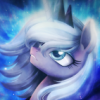
[Feature discussion] Depth of Field effect
MirceaKitsune replied to MirceaKitsune's topic in The Dark Mod
I did at some point wonder if the same shader could be used to achieve both effects. My idea was we could have a single blur post-process: Its minimum range would be something like 0.5 pixels to anti-alias sharp edges (both geometry and alpha textures) on top of which the depth map may increase it to also achieve distance blur. Would be a neat trick to solve two problems at once, but it surely won't work the way I imagine it and either not be effective or blur too much. Thus DOF should probably be its own thing, with antialiasing done as a separate shader if and when that happens... at best they may share and inherit from a single component if that's optimal. -
[posted a lot of text, that it doesnt make sense] Edit: those are some classic problems, but apparently not solved. Look at the file organization and the installers code, try to discus about it in this topic and change it. More info, see compilation guide and tdm installer source.
-
DarkRadiant 3.3.0 is ready for download. What's new: Feature: Remove menu options which are not applicable to current game Feature: Grey-out menu entries that are not applicable Feature: FX Declaration Parsing Support Feature: FX Chooser Feature: Renderer now takes "translucent" keyword into account Fixed: Lighting Mode Renderer draws hidden lights Fixed: Loading map results in "Real Hard DarkRadiant Failure" exception Fixed: Crash when trying to set default mouse or keyboard bindings Fixed: Unit Tests intermittently get stuck on Github runner Fixed: xmlutil thread safety problems Fixed: Some materials aren't displayed correctly Windows and Mac Downloads are available on Github: https://github.com/codereader/DarkRadiant/releases/tag/3.3.0 and of course linked from the website https://www.darkradiant.net Thanks to all the awesome people who keep using DarkRadiant to create Fan Missions - they are the main reason for me to keep going. Please report any bugs or feature requests here in these forums, following these guidelines: Bugs (including steps for reproduction) can go directly on the tracker. When unsure about a bug/issue, feel free to ask. If you run into a crash, please record a crashdump: Crashdump Instructions Feature requests should be suggested (and possibly discussed) here in these forums before they may be added to the tracker. The list of changes can be found on the our bugtracker changelog. Have fun mapping!
- 17 replies
-
- 14
-

-

-
I just read@motorsep Discovered that you are able to create a brush, then select it and right click "create light". Now you have a light that ha the radius of the former brush. Just read it on discord and thought it may be of use for some people in the forums here too.
-
Changelog of 2.10 development: dev16202-9175 * Major changes in security camera (5528, 4731, Wiki). * Entity limit removed raised to 64K (5439, announcement). * Added secrets tracking system for mappers to use (5549, Wiki). * Integrated Sotha's "automaton" AI from Ulysses into core assets. * Menu: improved the main page and the "new game" page to make it easier for new players. * Menu: ask for confirmation on game restart, fixed menu music setting. * Menu: show checkboxes near objectives after mission is failed (5049). * Fixed rare crash in script-generated frobs (5542). * Added idPlayer::GetObjectiveVisible script event (5543). * Fixed rare collision bug causing lags (5439, r9157). * Debug visualization no longer blocks SMP performance improvements (5468). * Fixed script-generated game saves by disabling screenshot due to SMP. * Added missing frob highlight to plaster materials (4487). * Removed missing material reference in skin "wench/purple_bodice". * Minor fixes to mirroring: puddle, bc_teatray. Known problems: Volta 1, Volta 2, and Snowed Inn don't start due to broken menu. dev16215-9224 * More work on security camera (5528, Wiki) --- not finished yet. * Massive changes in dmap to make it faster (5562, 5488, announcement). * Fixed vertices merging in dmap which could cause sparklies (5486). * OpenAL (sound) upgraded to 1.21.1, fixing bsinc resampler (5564). * Added first implementation of tooltips in settings menu (2626). dev16225-9284 * Map loading optimizations: texture storage, parallel image loading, models loading (5591). * Fixed map not starting after prior error + removed 5 seconds delay at the end of loading (5118). * Removed mandatory snapping from dmap, fixing thin objects like ropes (5486). * Improved precision of windings in dmap compilation (5580). * SIMD code cleanup: enabled AVX on Linux, disabled denormals (4550). * Dropped visportals are now further classified as "leaky" and generic ones (5353, wiki). * Fixed creation of script threads with object method call (4713). * Added cvar s_alReverbGain to tone down EFX reverb (5587). * r_materialOverride fixed with Frontend Acceleration. * Fixed when player is in the void with "r_useLightAreaCulling 0". * Minor fixes in menu tooltips. * Fixed GL debug groups on AMD (5280). * Changes in FPS counter, which make displayed value more stable when com_showFpsAvg is large. dev16238-9330 * Frob highlight replaced with frob outline (5427) --- not finished yet. * Linux platform-specific code now uses GLFW for window, GL-init and input handling (5510, 5293, testing). * Windows build can change desktop resolution once again; also made "borderless" mode default (5510). * New dmap diagnostics for location separators and location entities (5354). * Dmap leak pointfiles are much shorter now (5592). * FFmpeg video formats further restricted to mp4+h264+aac and roq (4845, announcement). * Fixed occasional crash at the end of RunScript AI task, happening e.g. in WS3 mission (5538). * Debug cvars r_lockSurfaces and r_maxTri improved. * Upgraded GLFW to 3.3.4. * Added generic hash map in the code; fixed race condition in shader loading during map start (5597). * Refactoring of Clear methods in code (5593). * Added slider in menu for reverb cvar s_alReverbGain (5587). * Menu tooltip improvements. * Experimental: localization system now accepts string placeholders (5261). dev16256-9358 * Implemented new object manipulation and body dragging physics (5599 announcement). * Extracted static geometry into its own VBO in VertexCache, fixing performance regression since 2.07 (5598). * Added weapons to inventory grid (5601). * Fixed in-game mission downloader warning when downloading localization pack (5551). * Fixed in-game mission downloader warning when FM is not available on the chosen mirror (5551). * Disabled bindless textures by default because it does not work on modern AMD GPUs. * Reduced lower limit on texture units to 32, probably fixing the "Too few!" startup error on bad GL drivers. * Allow choosing adaptive VSync in setting menu. * Fullscreen options in menu: borderless goes first + block resolution when borderless is selected. * Interaction table performance optimization when loading from savefile. * Changed number of contacts in physics to 32 everywhere + minor filling optimization (3871). * Save missions.tdminfo immediately after FM download finishes. * Better logging of FM downloads under LC_MAINMENU & LT_INFO (5551). * Saint Lucia FM: adjusted mission loading GUI to display tip for about 20% of loading time (5118). dev16269-9407 * Reimplemented frob-highlighting of surfaces (5427). * Removed TDM version display in the main menu. * Replaced r_glProfiling and r_logSmpTimings with Tracy profiler library. * Better handling of position-independent executable setting on Linux. * Improved third-party libs usage: fixed OpenAL build on GCC10, fixed rebuilding libs with GCC different from 5. dev16325-9462 * PNG image format is now supported in materials, PCX support removed (5665). * Major refactoring of image formats in: SEED, screenshots of all kind. DevIL library removed (5665). * Rough prototype of .srt subtitles in briefing video (2454). * Fixed stack overflow crash if CPU-resident image is defaulted e.g. when not found (5665). * Mission statistics now show number of game loads. * Silenced "missing vertex or index cache" console warning. * Calling "set" in GUI script with not enough arguments now results in Error instead of crash (5323). * Debug cvar r_skipFog expanded to filter out boundaries. * r_immediateRenderingEmulate = 1 by default, probably fixing debug visualization for people using deprecated GL profile. * Fixed GPL header in source code files. dev16330-9508 * Extended support of subtitles to both briefing video and in-game sounds (2454: BEWARE interface will change!) * Support updating the currently installed mission in in-game downloader (5661). * Supported hide_distance for particle emitters and geometry of light entities (5668). * JPG and PNG images are no longer compressed by pk4/zip (they are already compressed by themselves). * Fixed entity arguments broken in event system after entity limit removal (5439). The bug crashed Snowed Inn on startup. * Refactored entity think code, optimized away thinking of frobable entities. * Added con_nowrap cvar: it caps lengthy lines in game console instead of wrapping them to the next line. * Added a ton of trace scopes in game, dmap, and loading (enabled by com_enableTracing 1 and Tracy connection). * Minor fixes: parallelSky, r_showViewEntities, image_preload 0, r_singleModelName. Known problems: GUI is not drawn in-game until paper is frob-highlighted. dev16335-9550 * Added hot-reload support: LOD settings, _color and shaderParms, noshadows, angle, targets, frobmovers + rotate/translate, bound entities (5683). * Fixed error on respawning an AI (5683). * Added con_fontSize cvar, which allows making console font smaller, also enabled mipmapping. * Refactored shaders loading, which fixes SMP-specific crash on AMD drivers (5012). * Non-bound lights are turned off when they are hidden e.g. using LOD (post). * Fixed noshadows_lod_N not working sometimes (5691). * Fixed GUI rendering on parchments --- known problem from previous build. * Fixed color banding in lockpick success/failure highlights. * Changing tdm_lod_bias has immediate effect without restart. * Small fix towards loading RGTC normal maps from DDS. * Removed old broken code for entities binding/unbinding (5414). * Some showPrimitives fixes. * Automation: fixed bug with astronomical timer for game controls (not used anywhere yet). dev16342-9552 * Merged branch with major changes in main menu GUI (5323, thread). Known problems: All the missions from the list do not work as expected in main menu: custom background is missing, empty briefing page is shown, in rare cases even briefing/debriefing video can disappear. This will be properly fixed only when 2.10 is released. Right now you can download fixed pk4 file by direct link from the same page --- fixed version should work as expected. dev16350-9577 * Support "set X on head" spawnarg for attached heads (post). * Fixed lockpicking getting stuck if you go away (5715). * Hopefully fixed random flickering when frob-highlighting objects with stencil shadows enabled. * Fast and deterministic normal maps compression on CPU (5716). * Optimized OGG files loading. * Optimized TGA files loading. * Continued work on X-ray support. * Continued work on subtitles support (2454). * Added new models and prefabs by @Wellingtoncrab. * Added material textures/darkmod/window/wooden_frame01/wooden_frame01_dark. * Probably fixed reloadModels for .lwo files. dev16358-9588 * Fixed crashes in image loading on AMD driver (5591). * Fixed occasional crashes in TGA loading optimization (5716). * Generate mipmaps for non-DDS textures in software, see cvar image_mipmapMode. * Frob outline disabled by default, see r_frobOutline (thread). * Tweaked render order ("sort last") for particle materials. * Continued work on subtitles (2454). * Removed [cleanup] button in mod selection menu (thread). dev16368-9627 (*) * Major changes in frob highlight/outline: translucency, alpha test, shine-through (5427). * Restored geometric frob outline under r_frobOutline 2 (5427, post). * Fixed bug breaking GL core profile, which usually caused black menu on AMD (post). * (WIP) Volumetric light effect. * Renderer's "safe mode" changed to windowed 800 x 600 (post). * Cap volume parameter in sound shader by 1.5 (4627). * Lockpicking sound no longer affected by EFX reverb. * Some changes in time handling, fixed timescale on uncapped FPS (5324, 4698). * Reduced pause on game start from 1.0 to 0.1 seconds (5314). * Minor dmap (aas) acceleration (5562). * Minor optimizations in models / sounds loading. * Don't drop held item after bumping dead/unconscious AIs (3516). * Tweaked render order ("sort last") for particle materials, reverting some. * Some changes in randomization (5763). * Minor fix in game console. * Adjusted stlucia.pk4 to avoid tdm_installer analysis... unsuccessfully. * Changed integration of doctest unit tests. Known problems: some maps broken with "clip model outside world bounds" warning spam. dev16390-9648 * Fixed "clip model outside world bounds" warning spam on some maps (post). * Fixed sparklies on hard geometric frob outline with bloom (5427). * DDS textures can be used in image programs, although they should not (5781). * Fixed spotlights/projected lights illuminating objects outside their frustum (5529). * Continued work on volumetric light shader: LOD, stencil, etc. (5816). * Allow xray shader in GUI overlays, fixed rare crash. * Do not spam warnings when index cache is not ready yet, e.g. during noclip on large map. * Minor fix of game console behavior. * (WIP) Changed frustum of spotlights when near != 0 (5815). * Fixed AlertDuration of security camera (5528). * Fixed normalmaps: flagstones_mossy_01 (5777), flagstones_gravel (5760), ash_001 and ash01_crumb_edge (5784), blocks_large_mildew (5786), ornament_shield_white_eagleandpallets (5803). * Added material for rough_grey_blocks (5789). * Added missing "torn" skins for all paintings. * Commented out additional camera screen materials (5676). beta210-01 (rev 16399-9702) * Projected lights: restored TDM 2.07 behavior, fix lighting outside frustum (5815). * Fixed light frustum precision (4888). * Major changes in volumetric lights (5816). * Continued work on security camera (5528). * X-ray improvements. * Fixed severe slowdown with soft stencil shadows and antialiasing. * Allow lifting ragdolls above ground, unless they have "ground_when_dragged" (5599). * Fixed mirrors getting black under "image_useTexStorage 1" (topic). * Added script events: vecRotate, getCalibratedLightgemValue, setSolid, getEntityFlag. * Take entity orientation account in flinderization offsets. * Removed "emitter_size" spawnarg. * Fixed r_showLights. * Refactor shaders: extracted common code to includes. beta210-02 (rev 16411-9731) * Fixed dbghelp.dll issue which blocked running TDM on fresh Windows 7 (issue). * Fixed rare depth fighting when SSAO is on. * Fixed OpenGL error with shadow maps when no light fallbacks to stencil implementation. * Fixed envshot command (5796). * Restored materials and prefabs for multiple camera GUIs. * X-ray: supported "suppressInSubview" spawnarg on lights (also affects other subviews like mirrors) * Added X-ray related assets: materials, visible/invisible skins. * Added script events: getLocationPoint, pointIsInBounds, getTraceSurfType. * Preserve opacity towards AIs and restore frobability in script event setSolid. * Func_emitters can now be bound without the particle flickering rapidly. * Fixed "condump unwrap". * Added display case models without glass to allow them to have breakable glass. * Added forcescreenaspect + hcenter GUI keywords for aspect-ratio-independent images. * Removed a few subtitles lines which were for testing only. * Internal typeinfo changes. beta210-03 (rev 16421-9771) * Reverted to 2.09 frob-highlight: no outline, use material frob stages. * Added three new frob outline presets by @kingsal and @nbohr1more. * Changed the way volumetric lights are set up (see wiki page). * Volumetric lights respect noshadows and don't affect lightgem. * Added script events: getHealth, setHealth, setSolid,projectDecal; fixed getLocationPoint. * Added script event getEnemy and canSee to security camera. * Add Epifire's flinder models to the security cameras. * Fixed subtitles going sticky on save/load. * Slightly reduced subtitles font size, added semi-transparent black background. * Added subtitles to Saint Lucia mission. * Fixed dmap issue in generating unoptimized collision maps for patch-only entities (5859). * Elemental no longer has 8 legs, wasting time in inverse kinematics. * Some optimizations in frontend: fix disabled optimization, avoid vertex data copy. * Added r_useInteractionTriCulling -1 mode to move some CPU load to GPU. * Fixed lamp cubemap light textures. * Fixed language switches broken by new main menu GUI. * Fixed occasional spam about slow jobs (threshold is now 100 ms instead of 10 ms). * Corrected OpenGL usage of clipping planes in shadow map generation. * Console printing is now threadsafe, which could crash Frontend Acceleration. * Improvements in system console on Windows. * Allow all SIMD code supported by compiler on Elbrus CPU. beta210-04 (rev 16441-9798) * Security camera now supports AI detection, also fixed volumetric lights. * Fixed save/load for volumetric lights, supported scrolling light materials. * Fixed scrolling light textures (5860). * Fixed uncompressed normal maps and backface lighting (5862). * stain01bwet material now works as it always did, no depth fighting (5325). * Skip X-ray rendering when it is already within subview. * Removed parchment from message about secrets (5549). * Fixed and upscaled droppuddle texture (5870). * Extended tooltips in video settings menu. * Fixed randomization of gui::random_value on game load. * A bit more subtitles in Saint Lucia mission. * Fixed 1280 x 960 resolution in 4:3. * Fixed rare graphic bug in some debug tools. * Small optimization in frontend: reuse index array for interaction. beta210-05 (rev 16457-9815) * Fixed bright lines on the boundary of light volume on AMD drivers (5876). * Fixed secret counter increased multiple times on single-count entities (5549). * Security camera: "sweepWaitSoundOffset" spawnarg controls snd_end timing. * Security camera: snd_sparks and snd_death can be used simultaneously. * Security camera: split "seeAI" spawnarg into "seeAI", "seeAnimals", "seeBodies". * Fixed the xray model stuck in place when shouldered. * Improved player GUI for taking damage. * Added spawnarg "animal_patrol_wait" to allow animals that move continuously (post). * Portal sky scissor optimization. * A bit of cleaning in source code conan dependencies (5839). * Fixed hover highlight on Restart Game button in settings menu. * Volumetric lights refactoring. beta210-06 (rev 16472-9845) * Fixed saving/loading of suppressInSubview for X-ray. * Fixed language setting being ignored on restart (post). * Reimplemented rotation in new grabber code, rotating heavy objects is easy now (post). * Fixed weird spots sticking on screen sometimes when bloom is on (post). * Fixed seeAI setting for security camera towards AIs on hostile teams; updated editor descriptions. * Fixed one more bug causing tdm_installer to analyze installation. * image_downsize no longer affects loading screens and other GUIs. * Fixed lighting with "image_useNormalCompression 0". * Added editor description for nodrop spawnarg. * Reorganized mapper tool prefabs, fixed Epifire's wall-mounted security camera prefab. * Removed non-working 16-bit color option from the menu settings. * Improved EFX in New Job mission (5594). * Fixed issue in Saint Lucia mission: all voiceovers being played on mission restart (4828). * Some more corrections to subtitles in Saint Lucia mission. beta210-07 (rev 16474-9850) * Set r_useMultiDrawIndirect to 0, fixing NaN flickering on AMD drivers. * Fixed X-ray combined with Render Scale. beta210-08 (rev16475-9853) * Fixed crash on index cache resize with now default "r_useMultiDrawIndirect 0". Changelog of earlier versions can be found here.
-
Changelog of 2.10 development: dev16202-9175 * Major changes in security camera (5528, 4731, Wiki). * Entity limit removed raised to 64K (5439, announcement). * Added secrets tracking system for mappers to use (5549, Wiki). * Integrated Sotha's "automaton" AI from Ulysses into core assets. * Menu: improved the main page and the "new game" page to make it easier for new players. * Menu: ask for confirmation on game restart, fixed menu music setting. * Menu: show checkboxes near objectives after mission is failed (5049). * Fixed rare crash in script-generated frobs (5542). * Added idPlayer::GetObjectiveVisible script event (5543). * Fixed rare collision bug causing lags (5439, r9157). * Debug visualization no longer blocks SMP performance improvements (5468). * Fixed script-generated game saves by disabling screenshot due to SMP. * Added missing frob highlight to plaster materials (4487). * Removed missing material reference in skin "wench/purple_bodice". * Minor fixes to mirroring: puddle, bc_teatray. Known problems: Volta 1, Volta 2, and Snowed Inn don't start due to broken menu. dev16215-9224 * More work on security camera (5528, Wiki) --- not finished yet. * Massive changes in dmap to make it faster (5562, 5488, announcement). * Fixed vertices merging in dmap which could cause sparklies (5486). * OpenAL (sound) upgraded to 1.21.1, fixing bsinc resampler (5564). * Added first implementation of tooltips in settings menu (2626). dev16225-9284 * Map loading optimizations: texture storage, parallel image loading, models loading (5591). * Fixed map not starting after prior error + removed 5 seconds delay at the end of loading (5118). * Removed mandatory snapping from dmap, fixing thin objects like ropes (5486). * Improved precision of windings in dmap compilation (5580). * SIMD code cleanup: enabled AVX on Linux, disabled denormals (4550). * Dropped visportals are now further classified as "leaky" and generic ones (5353, wiki). * Fixed creation of script threads with object method call (4713). * Added cvar s_alReverbGain to tone down EFX reverb (5587). * r_materialOverride fixed with Frontend Acceleration. * Fixed when player is in the void with "r_useLightAreaCulling 0". * Minor fixes in menu tooltips. * Fixed GL debug groups on AMD (5280). * Changes in FPS counter, which make displayed value more stable when com_showFpsAvg is large. dev16238-9330 * Frob highlight replaced with frob outline (5427) --- not finished yet. * Linux platform-specific code now uses GLFW for window, GL-init and input handling (5510, 5293, testing). * Windows build can change desktop resolution once again; also made "borderless" mode default (5510). * New dmap diagnostics for location separators and location entities (5354). * Dmap leak pointfiles are much shorter now (5592). * FFmpeg video formats further restricted to mp4+h264+aac and roq (4845, announcement). * Fixed occasional crash at the end of RunScript AI task, happening e.g. in WS3 mission (5538). * Debug cvars r_lockSurfaces and r_maxTri improved. * Upgraded GLFW to 3.3.4. * Added generic hash map in the code; fixed race condition in shader loading during map start (5597). * Refactoring of Clear methods in code (5593). * Added slider in menu for reverb cvar s_alReverbGain (5587). * Menu tooltip improvements. * Experimental: localization system now accepts string placeholders (5261). dev16256-9358 * Implemented new object manipulation and body dragging physics (5599 announcement). * Extracted static geometry into its own VBO in VertexCache, fixing performance regression since 2.07 (5598). * Added weapons to inventory grid (5601). * Fixed in-game mission downloader warning when downloading localization pack (5551). * Fixed in-game mission downloader warning when FM is not available on the chosen mirror (5551). * Disabled bindless textures by default because it does not work on modern AMD GPUs. * Reduced lower limit on texture units to 32, probably fixing the "Too few!" startup error on bad GL drivers. * Allow choosing adaptive VSync in setting menu. * Fullscreen options in menu: borderless goes first + block resolution when borderless is selected. * Interaction table performance optimization when loading from savefile. * Changed number of contacts in physics to 32 everywhere + minor filling optimization (3871). * Save missions.tdminfo immediately after FM download finishes. * Better logging of FM downloads under LC_MAINMENU & LT_INFO (5551). * Saint Lucia FM: adjusted mission loading GUI to display tip for about 20% of loading time (5118). dev16269-9407 * Reimplemented frob-highlighting of surfaces (5427). * Removed TDM version display in the main menu. * Replaced r_glProfiling and r_logSmpTimings with Tracy profiler library. * Better handling of position-independent executable setting on Linux. * Improved third-party libs usage: fixed OpenAL build on GCC10, fixed rebuilding libs with GCC different from 5. dev16325-9462 * PNG image format is now supported in materials, PCX support removed (5665). * Major refactoring of image formats in: SEED, screenshots of all kind. DevIL library removed (5665). * Rough prototype of .srt subtitles in briefing video (2454). * Fixed stack overflow crash if CPU-resident image is defaulted e.g. when not found (5665). * Mission statistics now show number of game loads. * Silenced "missing vertex or index cache" console warning. * Calling "set" in GUI script with not enough arguments now results in Error instead of crash (5323). * Debug cvar r_skipFog expanded to filter out boundaries. * r_immediateRenderingEmulate = 1 by default, probably fixing debug visualization for people using deprecated GL profile. * Fixed GPL header in source code files. dev16330-9508 * Extended support of subtitles to both briefing video and in-game sounds (2454: BEWARE interface will change!) * Support updating the currently installed mission in in-game downloader (5661). * Supported hide_distance for particle emitters and geometry of light entities (5668). * JPG and PNG images are no longer compressed by pk4/zip (they are already compressed by themselves). * Fixed entity arguments broken in event system after entity limit removal (5439). The bug crashed Snowed Inn on startup. * Refactored entity think code, optimized away thinking of frobable entities. * Added con_nowrap cvar: it caps lengthy lines in game console instead of wrapping them to the next line. * Added a ton of trace scopes in game, dmap, and loading (enabled by com_enableTracing 1 and Tracy connection). * Minor fixes: parallelSky, r_showViewEntities, image_preload 0, r_singleModelName. Known problems: GUI is not drawn in-game until paper is frob-highlighted. dev16335-9550 * Added hot-reload support: LOD settings, _color and shaderParms, noshadows, angle, targets, frobmovers + rotate/translate, bound entities (5683). * Fixed error on respawning an AI (5683). * Added con_fontSize cvar, which allows making console font smaller, also enabled mipmapping. * Refactored shaders loading, which fixes SMP-specific crash on AMD drivers (5012). * Non-bound lights are turned off when they are hidden e.g. using LOD (post). * Fixed noshadows_lod_N not working sometimes (5691). * Fixed GUI rendering on parchments --- known problem from previous build. * Fixed color banding in lockpick success/failure highlights. * Changing tdm_lod_bias has immediate effect without restart. * Small fix towards loading RGTC normal maps from DDS. * Removed old broken code for entities binding/unbinding (5414). * Some showPrimitives fixes. * Automation: fixed bug with astronomical timer for game controls (not used anywhere yet). dev16342-9552 * Merged branch with major changes in main menu GUI (5323, thread). Known problems: All the missions from the list do not work as expected in main menu: custom background is missing, empty briefing page is shown, in rare cases even briefing/debriefing video can disappear. This will be properly fixed only when 2.10 is released. Right now you can download fixed pk4 file by direct link from the same page --- fixed version should work as expected. dev16350-9577 * Support "set X on head" spawnarg for attached heads (post). * Fixed lockpicking getting stuck if you go away (5715). * Hopefully fixed random flickering when frob-highlighting objects with stencil shadows enabled. * Fast and deterministic normal maps compression on CPU (5716). * Optimized OGG files loading. * Optimized TGA files loading. * Continued work on X-ray support. * Continued work on subtitles support (2454). * Added new models and prefabs by @Wellingtoncrab. * Added material textures/darkmod/window/wooden_frame01/wooden_frame01_dark. * Probably fixed reloadModels for .lwo files. dev16358-9588 * Fixed crashes in image loading on AMD driver (5591). * Fixed occasional crashes in TGA loading optimization (5716). * Generate mipmaps for non-DDS textures in software, see cvar image_mipmapMode. * Frob outline disabled by default, see r_frobOutline (thread). * Tweaked render order ("sort last") for particle materials. * Continued work on subtitles (2454). * Removed [cleanup] button in mod selection menu (thread). dev16368-9627 (*) * Major changes in frob highlight/outline: translucency, alpha test, shine-through (5427). * Restored geometric frob outline under r_frobOutline 2 (5427, post). * Fixed bug breaking GL core profile, which usually caused black menu on AMD (post). * (WIP) Volumetric light effect. * Renderer's "safe mode" changed to windowed 800 x 600 (post). * Cap volume parameter in sound shader by 1.5 (4627). * Lockpicking sound no longer affected by EFX reverb. * Some changes in time handling, fixed timescale on uncapped FPS (5324, 4698). * Reduced pause on game start from 1.0 to 0.1 seconds (5314). * Minor dmap (aas) acceleration (5562). * Minor optimizations in models / sounds loading. * Don't drop held item after bumping dead/unconscious AIs (3516). * Tweaked render order ("sort last") for particle materials, reverting some. * Some changes in randomization (5763). * Minor fix in game console. * Adjusted stlucia.pk4 to avoid tdm_installer analysis... unsuccessfully. * Changed integration of doctest unit tests. Known problems: some maps broken with "clip model outside world bounds" warning spam. dev16390-9648 * Fixed "clip model outside world bounds" warning spam on some maps (post). * Fixed sparklies on hard geometric frob outline with bloom (5427). * DDS textures can be used in image programs, although they should not (5781). * Fixed spotlights/projected lights illuminating objects outside their frustum (5529). * Continued work on volumetric light shader: LOD, stencil, etc. (5816). * Allow xray shader in GUI overlays, fixed rare crash. * Do not spam warnings when index cache is not ready yet, e.g. during noclip on large map. * Minor fix of game console behavior. * (WIP) Changed frustum of spotlights when near != 0 (5815). * Fixed AlertDuration of security camera (5528). * Fixed normalmaps: flagstones_mossy_01 (5777), flagstones_gravel (5760), ash_001 and ash01_crumb_edge (5784), blocks_large_mildew (5786), ornament_shield_white_eagleandpallets (5803). * Added material for rough_grey_blocks (5789). * Added missing "torn" skins for all paintings. * Commented out additional camera screen materials (5676). beta210-01 (rev 16399-9702) * Projected lights: restored TDM 2.07 behavior, fix lighting outside frustum (5815). * Fixed light frustum precision (4888). * Major changes in volumetric lights (5816). * Continued work on security camera (5528). * X-ray improvements. * Fixed severe slowdown with soft stencil shadows and antialiasing. * Allow lifting ragdolls above ground, unless they have "ground_when_dragged" (5599). * Fixed mirrors getting black under "image_useTexStorage 1" (topic). * Added script events: vecRotate, getCalibratedLightgemValue, setSolid, getEntityFlag. * Take entity orientation account in flinderization offsets. * Removed "emitter_size" spawnarg. * Fixed r_showLights. * Refactor shaders: extracted common code to includes. beta210-02 (rev 16411-9731) * Fixed dbghelp.dll issue which blocked running TDM on fresh Windows 7 (issue). * Fixed rare depth fighting when SSAO is on. * Fixed OpenGL error with shadow maps when no light fallbacks to stencil implementation. * Fixed envshot command (5796). * Restored materials and prefabs for multiple camera GUIs. * X-ray: supported "suppressInSubview" spawnarg on lights (also affects other subviews like mirrors) * Added X-ray related assets: materials, visible/invisible skins. * Added script events: getLocationPoint, pointIsInBounds, getTraceSurfType. * Preserve opacity towards AIs and restore frobability in script event setSolid. * Func_emitters can now be bound without the particle flickering rapidly. * Fixed "condump unwrap". * Added display case models without glass to allow them to have breakable glass. * Added forcescreenaspect + hcenter GUI keywords for aspect-ratio-independent images. * Removed a few subtitles lines which were for testing only. * Internal typeinfo changes. beta210-03 (rev 16421-9771) * Reverted to 2.09 frob-highlight: no outline, use material frob stages. * Added three new frob outline presets by @kingsal and @nbohr1more. * Changed the way volumetric lights are set up (see wiki page). * Volumetric lights respect noshadows and don't affect lightgem. * Added script events: getHealth, setHealth, setSolid,projectDecal; fixed getLocationPoint. * Added script event getEnemy and canSee to security camera. * Add Epifire's flinder models to the security cameras. * Fixed subtitles going sticky on save/load. * Slightly reduced subtitles font size, added semi-transparent black background. * Added subtitles to Saint Lucia mission. * Fixed dmap issue in generating unoptimized collision maps for patch-only entities (5859). * Elemental no longer has 8 legs, wasting time in inverse kinematics. * Some optimizations in frontend: fix disabled optimization, avoid vertex data copy. * Added r_useInteractionTriCulling -1 mode to move some CPU load to GPU. * Fixed lamp cubemap light textures. * Fixed language switches broken by new main menu GUI. * Fixed occasional spam about slow jobs (threshold is now 100 ms instead of 10 ms). * Corrected OpenGL usage of clipping planes in shadow map generation. * Console printing is now threadsafe, which could crash Frontend Acceleration. * Improvements in system console on Windows. * Allow all SIMD code supported by compiler on Elbrus CPU. beta210-04 (rev 16441-9798) * Security camera now supports AI detection, also fixed volumetric lights. * Fixed save/load for volumetric lights, supported scrolling light materials. * Fixed scrolling light textures (5860). * Fixed uncompressed normal maps and backface lighting (5862). * stain01bwet material now works as it always did, no depth fighting (5325). * Skip X-ray rendering when it is already within subview. * Removed parchment from message about secrets (5549). * Fixed and upscaled droppuddle texture (5870). * Extended tooltips in video settings menu. * Fixed randomization of gui::random_value on game load. * A bit more subtitles in Saint Lucia mission. * Fixed 1280 x 960 resolution in 4:3. * Fixed rare graphic bug in some debug tools. * Small optimization in frontend: reuse index array for interaction. beta210-05 (rev 16457-9815) * Fixed bright lines on the boundary of light volume on AMD drivers (5876). * Fixed secret counter increased multiple times on single-count entities (5549). * Security camera: "sweepWaitSoundOffset" spawnarg controls snd_end timing. * Security camera: snd_sparks and snd_death can be used simultaneously. * Security camera: split "seeAI" spawnarg into "seeAI", "seeAnimals", "seeBodies". * Fixed the xray model stuck in place when shouldered. * Improved player GUI for taking damage. * Added spawnarg "animal_patrol_wait" to allow animals that move continuously (post). * Portal sky scissor optimization. * A bit of cleaning in source code conan dependencies (5839). * Fixed hover highlight on Restart Game button in settings menu. * Volumetric lights refactoring. beta210-06 (rev 16472-9845) * Fixed saving/loading of suppressInSubview for X-ray. * Fixed language setting being ignored on restart (post). * Reimplemented rotation in new grabber code, rotating heavy objects is easy now (post). * Fixed weird spots sticking on screen sometimes when bloom is on (post). * Fixed seeAI setting for security camera towards AIs on hostile teams; updated editor descriptions. * Fixed one more bug causing tdm_installer to analyze installation. * image_downsize no longer affects loading screens and other GUIs. * Fixed lighting with "image_useNormalCompression 0". * Added editor description for nodrop spawnarg. * Reorganized mapper tool prefabs, fixed Epifire's wall-mounted security camera prefab. * Removed non-working 16-bit color option from the menu settings. * Improved EFX in New Job mission (5594). * Fixed issue in Saint Lucia mission: all voiceovers being played on mission restart (4828). * Some more corrections to subtitles in Saint Lucia mission. beta210-07 (rev 16474-9850) * Set r_useMultiDrawIndirect to 0, fixing NaN flickering on AMD drivers. * Fixed X-ray combined with Render Scale. beta210-08 (rev16475-9853) * Fixed crash on index cache resize with now default "r_useMultiDrawIndirect 0". Changelog of earlier versions can be found here.
-
I'm still using a Brother black & white laserprinter from 2004. Almost never had problems with it. I think Laser/led printers usually have less problems than inktjet.
-

RPS Article on Thief genre from perspective of original TTLG dev
New Horizon replied to Shadow's topic in Off-Topic
TTLG? That's Through the Looking Glass Forums. A looking glass fan community. Has been around for a long, long time. https://www.ttlg.com/forums/ -
Gimp update don't need so much, at least if you don't use an old modem with 56 bauds. When you have a slow internet, downloading a newer version from other user needs even more. I think that update Gimp or download the last versión from the oficial page is the fastes solucion. I use Krita and downloading and install it are only a few minutes-(Krita also can handle raster file formats.)
-
Hello everyone. So I bought myself a new trackball mouse, the Elecom Huge M-HT1URBK. So far I am pretty happy with it, but I've run into an issue using the mouse software that comes with it. Although the installer has selected english as standard installation language (and I have kept it like that) and the whole install process is performed in english, the software is using japanese language instead. The program itself does not allow a change of language. I've already contacted their support and although they are eager to help me, they are of no big help thus far, so I thought I may ask here. Some information: I am using Windows 7 Professional 64bit, german version. I've already tried setting the language for non-unicode programs to english. Installing additional language packs is not possible under Professional, at least not in an easy way, and I don't want to change my system language just to use a mouse program. I've also searched the regestry (searchword "elecom") and found one entry 'language', but that was set to english. Maybe one of you folks have an idea what might cause the issue and how to probably solve it. Thanks in advance.
-
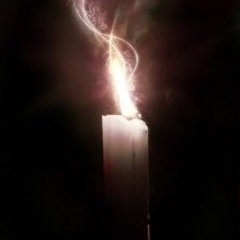
TDM Beta Release schedule confusion and frustrations
Dragofer replied to Daft Mugi's topic in The Dark Mod
I think the reason the dev forums exist is to provide a place where the implementation of features can be discussed without getting mixed up with other debates when someone believes what the devs are doing is wrong. We often post public discussion threads for features with subjective elements like the frob outline, because community feedback is very important. But there will always be vocal defenders with strong views for or against certain features, or how exactly it should be implemented in their opinion. At some point a decision has to be made and be carried through, which is what the dev forums are for. Almost all of the threads are very technical, basically explaining and discussing recent or potential code changes with other devs. Its hard to say. Its a hobby the devs do in their spare time, so people come and go when they're in the mood and when they have the time. The team page is mostly accurate except for some relatively newer additions like myself. -
https://github.com/HansKristian-Work/vkd3d-proton/tags <- directx 12 wrapper for dxvk https://github.com/doitsujin/dxvk/tags <- directx to vulkan wrappers D3D 9 to 11 eg. dxvk if you want to try it with horizon zero dawn you need to copy out dxcompiler.dll from Tools\ShaderCompiler\PC\1.0.2595\x64 and bink2w64.dll from Tools\bin and place them next to HorizonZeroDawn.exe. then copy over dxgi.dll from dxvk and d3d12.dll from vkd3d and place them next to it to. now fire up the game and let the shaders recompile -> profit.

